- Home
- Anthony Ryan
Songs of the Dark
Songs of the Dark Read online
Songs of the Dark
Short Fiction from the World of Raven’s Shadow
Anthony Ryan
Copyright © 2021 by Anthony Ryan
All rights reserved.
No part of this book may be reproduced in any form or by any electronic or mechanical means, including information storage and retrieval systems, without written permission from the author, except for the use of brief quotations in a book review.
Created with Vellum
Contents
Songs of the Dark
Introduction
Author’s Note
A Duel of Evils
Author’s Note
Many Are the Dead
Chapter 1
Chapter 2
Chapter 3
Chapter 4
Chapter 5
Chapter 6
Chapter 7
Chapter 8
Chapter 9
Chapter 10
Chapter 11
Author’s Note
The Lady of Crows
Chapter 1
Chapter 2
Chapter 3
Chapter 4
Chapter 5
Chapter 6
Chapter 7
Chapter 8
Chapter 9
Chapter 10
Chapter 11
Author’s Note
The Lord Collector
About the Author
Songs of the Dark
Short Fiction from the World of Raven’s Shadow
* * *
By
* * *
Anthony Ryan
Introduction
On January 5th 2012 I published my first novel, Blood Song, on the Amazon Kindle Store with, it must be said, no real expectations at all. I had been writing stories since my early teens and writing novels since my early twenties, enjoying the level of success typical of the novice writer, i.e. none. Calling Blood Song my first novel is, in reality, something of a misnomer. My first novel was actually a pretty terrible gangster crime epic set in 1980s London that fully deserved all the rejection it received from the publishing industry. Fortunately, this was in the pre-internet, pre-cloud storage, pre-‘you can never forget or lose anything’ age so there are no copies of this execrable opus hanging around to embarrass me now. The fact was that I had written a novel without really knowing how and the results were predictably awful. The more important fact, which I can only appreciate with the hindsight of twenty-plus years, is that I had written a novel. Bad as it was, I had actually completed a three hundred page story, learning a great deal in the process, the most salient lessons of all being:
* * *
Writing is hard.
No book ever writes itself.
(Also, try never to run out of tea, but that might just be me).
* * *
So, as I said, no real expectations, except that with Blood Song I had a dim, nebulous suspicion that I might just have… something.
I’ve been asked many times about the origins of this novel. What or who inspired Vaelin Al Sorna and his brothers in the Sixth Order? Where did the world come from? Why does he carry his sword on his back because I saw a YouTube video that says that’s a stupid way to carry a sword? The honest answers to these questions are always somewhat underwhelming: I don’t know exactly. Reading a lot of history. Because it looks cool.
The exact moment of inspiration for a story is never easy to pin down, and often impossible. What I do know is that it first began to gel in the post-911 era when notions of religious conflict where at the forefront of my mind and I had spent much of the previous decade reading a great deal of fantasy. Add my abiding love of history to the mix, stew for a few years and what would become the world of the Raven’s Shadow series was born.
Six and a half years is a long time to spend writing a book, in fact it’s a long time to spend doing anything. During the course of writing Blood Song there were protracted periods where I wrote very little or nothing at all. The pressures of having a job and living a life will do that, although I probably could have spent a little less time playing video games or bingeing Buffy and Angel box-sets on VHS (an ancient mechanical contrivance fashioned from magnetic tape and plastic, ask your parents or Google it). Did I mention this was a while ago?
Despite my many absences (and bouts of laziness) something always kept bringing me back to Vaelin’s story. Other books had come and gone over the years, most unfinished it must be said, but this one stuck around. It took me a while to figure out why and in the end it came down to two things; curiosity as to what would happen next and an increasingly deep sense of connection to the world and characters I had created.
Other writers have spoken about the curious sense of discovery that comes from writing fiction. Put simply, it doesn’t feel like you’re making it up (even though you are), it feels like you’re finding it out. So it was with Blood Song. I did have a plan of sorts when I started. It was about a page long and I didn’t look at it again throughout all the years it took to finish the book. So, it could be said I knew what would happen in the end, except I didn’t. Ultimately, I changed it because the original ending just didn’t make sense. Also, if the ending came as a surprise to me, there was a decent chance it might also surprise the reader.
What followed is a familiar tale that requires little re-telling: author sends manuscript to numerous agents, author receives numerous rejection letters, author decides to take a chance on self-publishing. The seven years since have been a remarkably transformative experience that enabled me to become a full-time writer and sell over a million books worldwide, all largely because a lot of readers became as engaged with Vaelin’s world as I did.
The unexpectedly swift success of Blood Song led to a publishing contract for a trilogy, the second volume of which brings us to the genesis of the stories you, dear reader, now hold in your hopefully un-sweaty hands. I had vaguely pondered the notion of writing short fiction set in the Raven’s Shadow world but it was only when my UK editor raised the possibility of including addition material in Tower Lord, book two of the trilogy, that the first serious ideas began to come together.
Stories are a bit like an itch at first. You scratch them with a few moment’s attention every now and then but the itch only grows fiercer the more you scratch. As a consequence, the prospect of writing the suggested shorter works seemed more like a necessity as time went by, as the only way to banish this particular kind of itch is to excise the cause. Once written, the itch goes away. Naturally, it’ll soon be replaced by another but that’s the lot of being a writer. In this case the scratching produced a novella, The Lord Collector, and a short story, A Duel of Evils, of which more in the author’s note that precedes each story.
For various reasons neither story actually made it into the Tower Lord hardcover which left me free to publish them elsewhere. The response from readers was sufficiently encouraging to set me thinking about other stories which would allow a deeper exploration of characters who hadn’t received as much screen time in the main series as they perhaps deserved. This led me to write (when time allowed) two more novellas, The Lady of Crows and Many Are the Dead.
The stories are presented here in the order in which they fit into the timeline of the overall Raven’s Shadow narrative rather than the order in which they appeared in print. Therefore, A Duel of Evils is placed first by virtue of the events it depicts taking place centuries before everything else. At present, I have only vague ideas for further short works in this world, but I’d be very surprised if there weren’t more itches to scratch sooner or later.
* * *
Anthony Ryan, June 2019
Author’s Note
The genesis of A Duel of Evils came from a historica
l anecdote related at one point in Tower Lord, Book 2 of the Raven’s Shadow trilogy. Lord Verniers, a historian of some repute, briefly describes the fall of the city state of Kethia as an example of heroic leadership. I had originally wanted this section to be a bit longer but kept it short for pacing reasons. With Tower Lord complete and off to my editor, I started thinking about how Verniers would have approached telling the tale of Kethia’s fall. History has been a passion of mine since childhood and it was a fun idea to present the imaginary history of the Raven’s Shadow world through the prism of an historical text rather than the conventions of prose fiction. In doing so I drew a great deal of inspiration from the Punic Wars, which climaxed in one of the first true city-battles in history when mighty Carthage was raised to the ground after a protracted street-to-street and house-to-house assault by Roman legionaries. I also wanted to convey the depth of the backstory that comes to fruition in the main trilogy, so fans of the series will surely find a few nods to future events in the tale of Kethia’s dark fate.
A Duel of Evils
- or -
* * *
The Fall of Kethia
* * *
Being a true and unbiased account of the destruction of that city compiled at the order of Emperor Aluran Maxtor Selsus (blessed by the Gods for all the ages) by Lord Verniers Alishe Someren, Imperial Chronicler and First of the Learned.
* * *
In preparing this history I have been honoured to follow My Emperor’s wise instruction to compose an account free from the vagaries of myth and legend, those cursed twins destined to forever obstruct the path of the rational scholar in his quest for truth. However, as you will see, all surviving sources relating to the events described below are riven, one might say sullied, by references to the bizarre and outright impossible. It is a singular mystery why an event of such import to the Volarian Empire, a culture renowned for promoting rationality with a vigour bordering on mania, should produce witnesses so lacking in that very quality. It is, of course, probable that these witnesses were delusional, the extremes of war having been known to strip reason from even the most stable mind. However, I have chosen not to exclude their more outlandish reportage, as it has ever been my contention that the perception of an event is at least as important as its true substance.
In considering how and why the once mighty city-state of Kethia came to its dreadful end, we must first understand its origins. The bulk of early Volarian history exists as a melange of legend and folklore, largely revolving around the deeds of various improbably mighty heroes, their myriad battles and betrayals performed in service to the now extinct Volarian pantheon. Much of the physical evidence to emerge from this period is limited to indecipherable tablet inscriptions and somewhat lurid illustrations from the few artifacts to survive, mostly pottery fragments and incomplete mosaics. The one unifying theme to these disparate images is that of destruction; cities burn, hordes of people are put to the sword by inhuman armies clad in blood-red armour, and beasts of unlikely configuration spring from the bowels of the earth to wreak all manner of havoc. Whilst these images are most certainly exaggerations or complete inventions, taken as a whole they do indicate that the landmass which now comprises the bulk of the Volarian Empire was once witness to a struggle of near genocidal proportions, a struggle that can only be said to have abated when recognisable settlements begin to reappear, generating trade and correspondence in the process.
The earliest reference to employ the modern name for Kethia dates back some sixteen hundred years, a full century in fact before the birth of our own (glorious and surely eternal) Empire. My prolonged sojourn through the imperial archives unearthed several ancient cargo manifests relating to the purchase and exchange of goods with a settlement situated on the western coast of what is now the Volarian province of Eskethia. The record of trade with this settlement increases in volume over successive centuries to the point where they attain sufficient wealth and sophistication to secure a formal treaty with Emperor Rahlun, the tenth chosen to sit on the Alpiran throne. The details of the treaty are fairly standard; an agreement to maintain existing tariffs and mutual protection of vessels from piracy. But it is clear from the preamble that by this point the Kethians were already engaged in a bitter rivalry with the port of Volar, situated over three hundred miles to the northeast.
A brief glance at any map of the north Volarian coast provides ample explanation as to why these two cities might come into conflict. Volar sits at the end of a long, narrow estuary known as the Cut of Lokar. A relatively easy waterway to navigate according to my seafaring sources, but providing markedly less ease of access to the Boraelin trade routes than that offered by Kethia, which also benefited from rich surrounding farmlands producing wine and cotton in substantial quantities. The decades preceding the Kethian treaty with Alpira had seen numerous border skirmishes and at least one major battle as the two ports competed for trade and prestige. However, events were to take a decidedly more serious turn with the advent of Volarian hegemony over much of the continent, a period known to history as The Forging Age. Aided by a sophisticated military doctrine, and a ruthlessly practical approach to both diplomacy and warfare, the nascent Volarian Empire had become a recognisable entity some eight centuries ago, at which point our tale begins in earnest.
To understand the subsequent course of events requires a certain appreciation of both the differences and similarities between Kethian and Volarian culture. It is not my intention to laud one as superior to the other, as it will become clear to My Emperor that both peoples appear somewhat bestial in comparison to the unmatched excellence of Alpiran society. For example, each culture employed a code of justice that can only be described as barbaric; every crime, regardless of pettiness, was (and remains so in modern Volaria) punishable by execution, more serious criminals being required to undergo a series of prescribed tortures before receiving the, no doubt, blessed release of death. However, similar brutality between the two adversaries was not matched by similar governance. I will spare you, Sire, a recounting of the long and ugly history of the peculiar Volarian institution of slavery, except to relate that by the dawn of its ascendancy, slavery sat at the heart of all aspects of Volarian society.
Volaria, as My Emperor knows, is ruled by a council drawn from the wealthiest citizens in the empire. In modern times the path to Council-man status is a mysterious one, wreathed in labyrinthine intrigue and a complex system of patronage. In fact, it is never clear to outsiders who sits on the council, as it appears some families have occupied their seats for generations without troubling themselves to change the name to match the current occupant. But, in its earlier incarnation entry to the council was simply a matter of amassing wealth equivalent to the value of one hundred thousand slaves. The number of council seats throughout the ages is therefore a useful indicator of the overall size of the empire, or at least its slave population. By the advent of unrestricted war against Kethia, the council consisted of ten members and its control over the growing Volarian dominions was near absolute.
Kethia, by contrast, had no need of councils. For, like the savages inhabiting the damp land to the north, Kethia had a king. However, unlike the north-men, the king of Kethia did not ascend by virtue of birth but at the whim of his people. Every four years all men over the age of thirty, owning house or livestock, would gather at an impressive structure in the city’s centre. The name of this building has been lost but, if the illustrations of Kethia’s ruins are to be believed, it would have been a remarkable sight, standing thirty feet tall and ringed by marble columns some five feet in diameter. Every man would be given a single black stone and a vase would be placed before each of the candidates aspiring to kingship. Each man would come forward and reach his hand into every vase, keeping his fist closed when he drew it out, so none would know into which vase he had dropped his stone. Once all the gathered men had cast their stones, each vase would be emptied and the stones counted in full view of the assembly. The candidate whose vase cont
ained the most stones would ascend to the throne.
Any man of suitable age and property could present himself for kingship, though the Kethian scholar and diplomat Karvalev provides an insight into the kind of individual who stood the best chance of success:
* * *
No farmer ever won the throne. Nor a drover, nor a smith, nor a wheelwright. Our kings have ever been merchants, or the sons of merchants. Or warriors of great renown, or the sons of warriors of great renown. And none have ever known poverty. Kethian mothers wishing to shame indolent sons will often resort to an old saying, ‘Keep on like this and there’ll never be a stone in your vase.’
* * *
Karvalev was fated, or cursed, to witness much of what follows, so naturally his account forms a principal source for this history. Many of his works have been lost to the ages but he appears to have been widely read in his lifetime, ensuring a considerable portion of his writings were copied and distributed, apparently to his great annoyance: ‘The whole world benefits from the art of this poor scholar who must bargain for ink.’

 Raven’s Shadow Book One: Blood Song (Raven's Shadow)
Raven’s Shadow Book One: Blood Song (Raven's Shadow)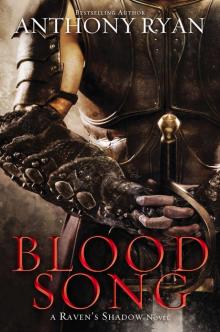 Blood Song
Blood Song Queen of Fire
Queen of Fire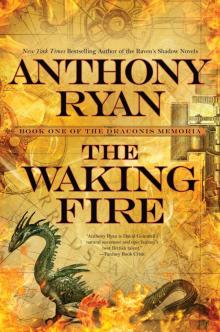 The Waking Fire
The Waking Fire The Legion of Flame
The Legion of Flame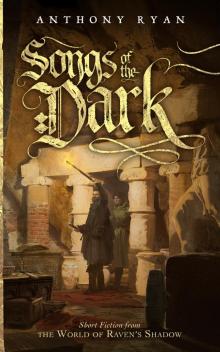 Songs of the Dark
Songs of the Dark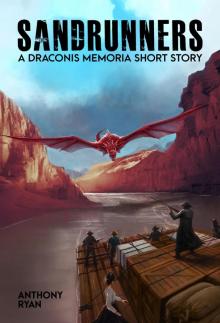 Sandrunners--A Draconis Memoria Short Story
Sandrunners--A Draconis Memoria Short Story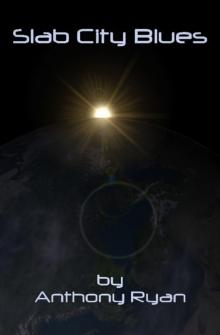 Slab City Blues
Slab City Blues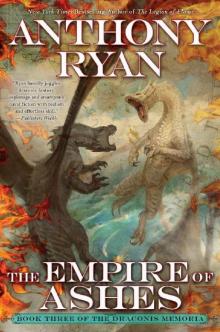 The Empire of Ashes
The Empire of Ashes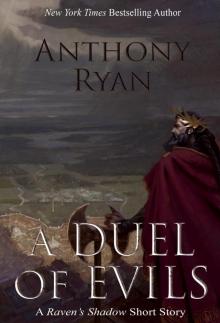 A Duel of Evils
A Duel of Evils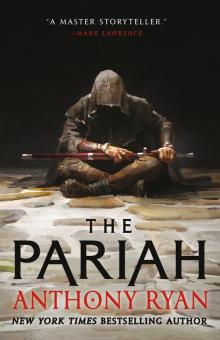 The Pariah
The Pariah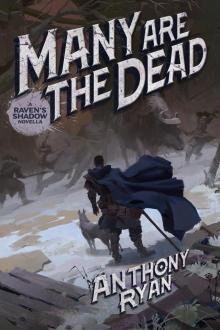 Many Are the Dead
Many Are the Dead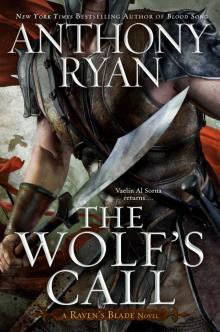 The Wolf's Call
The Wolf's Call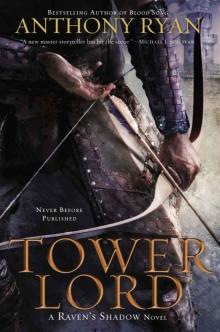 Tower Lord (A Raven's Shadow Novel)
Tower Lord (A Raven's Shadow Novel)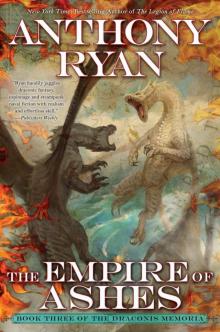 The Empire of Ashes (The Draconis Memoria)
The Empire of Ashes (The Draconis Memoria)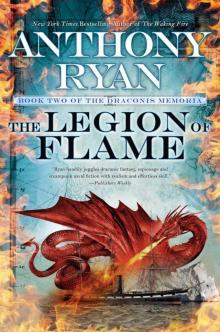 The Legion of Flame (The Draconis Memoria)
The Legion of Flame (The Draconis Memoria) Slab City Blues: A Song for Madame Choi
Slab City Blues: A Song for Madame Choi